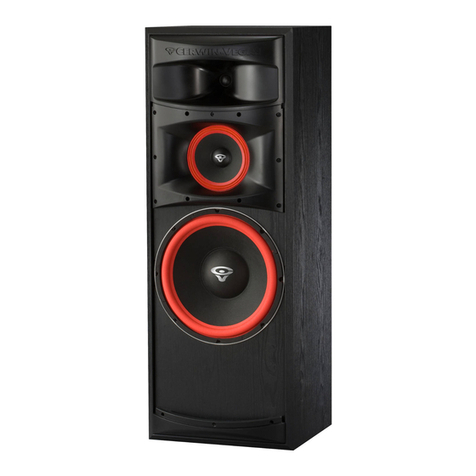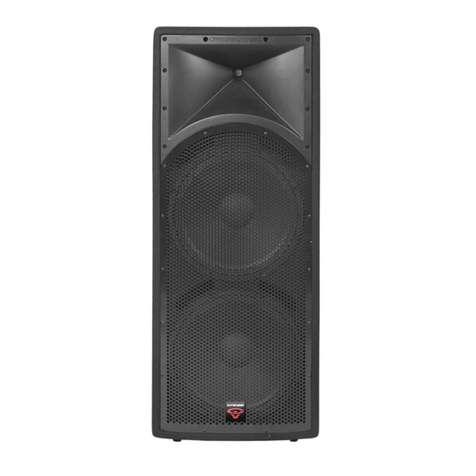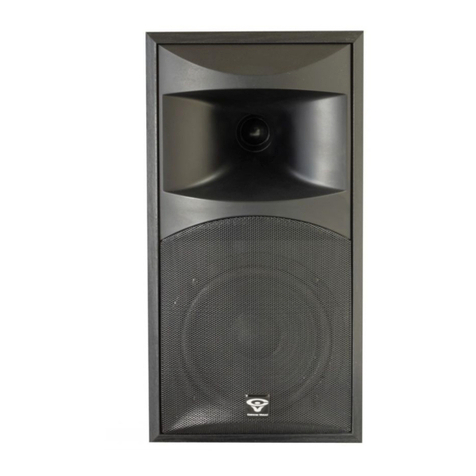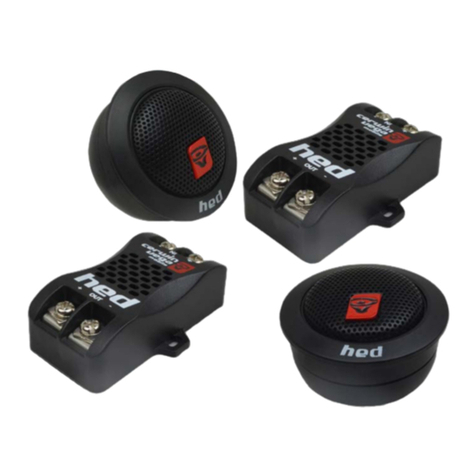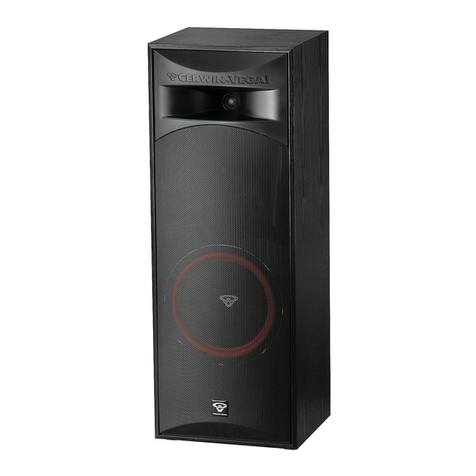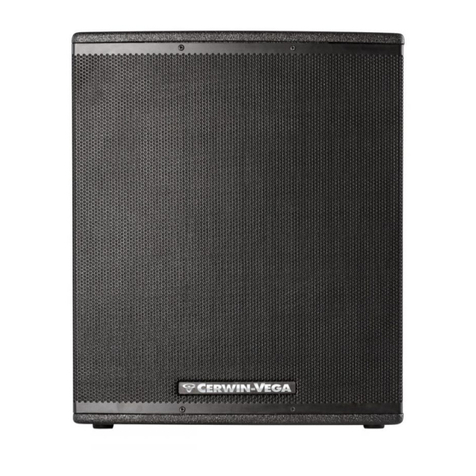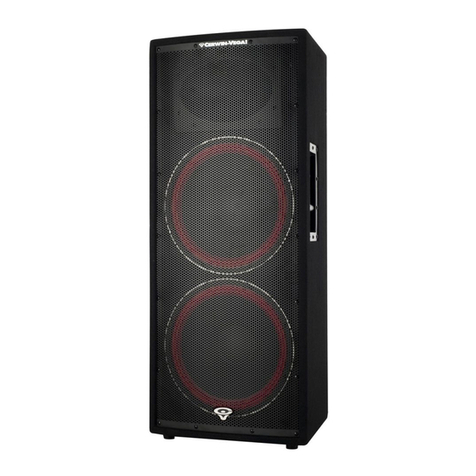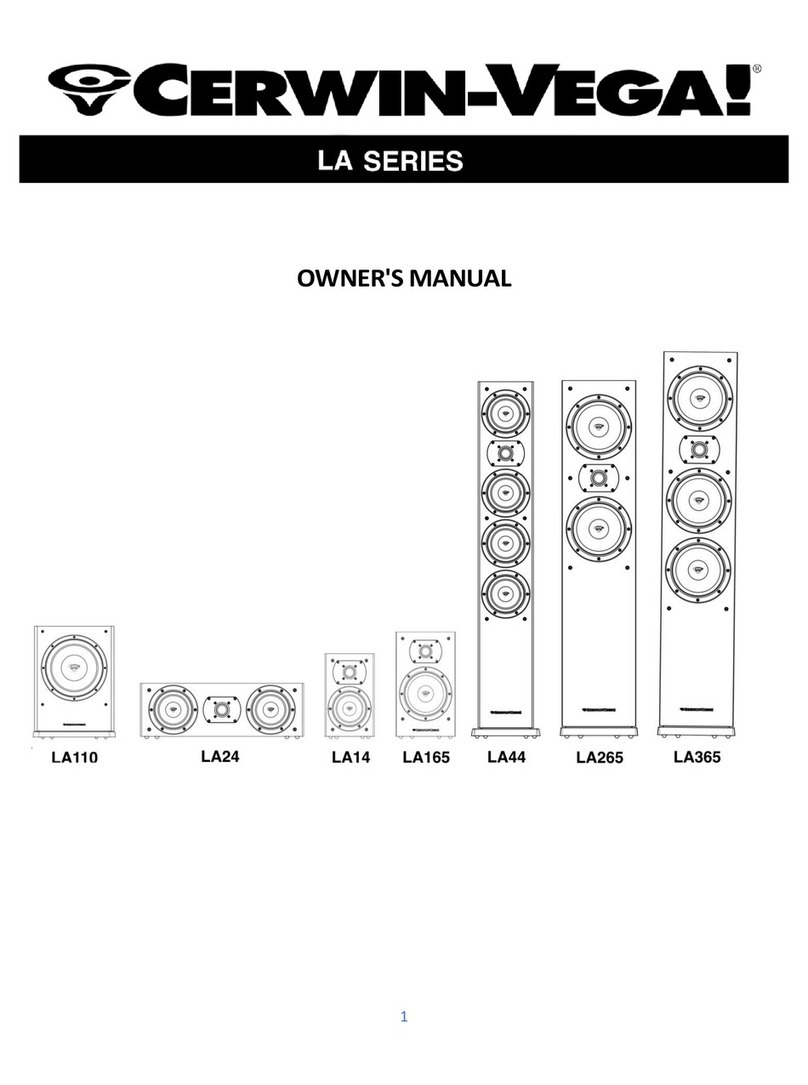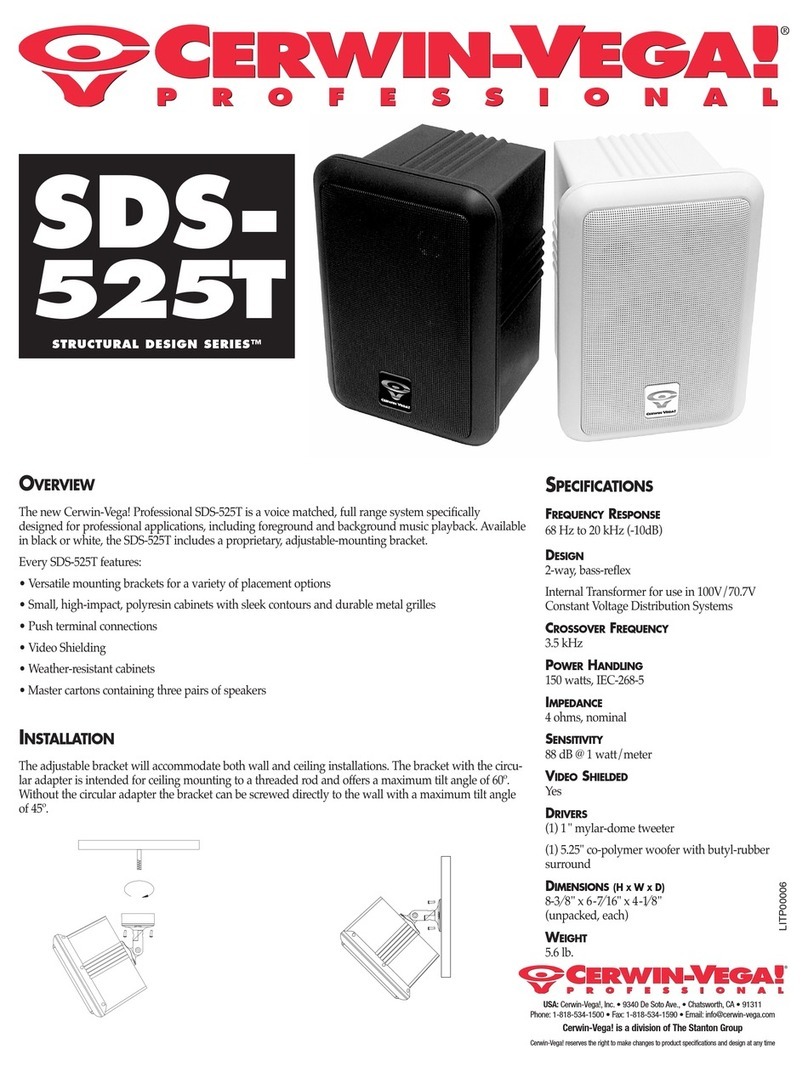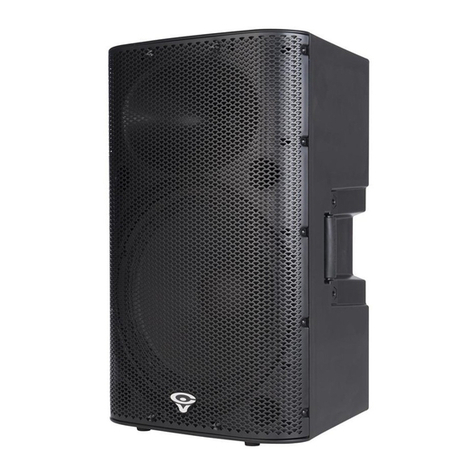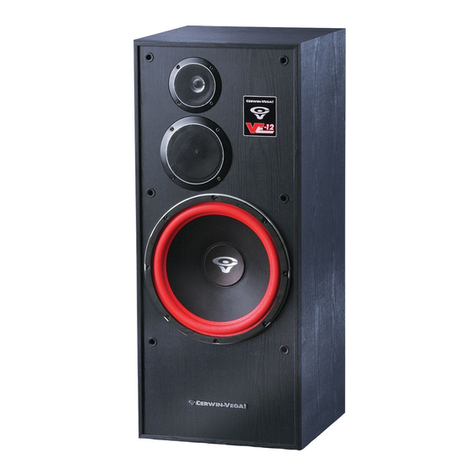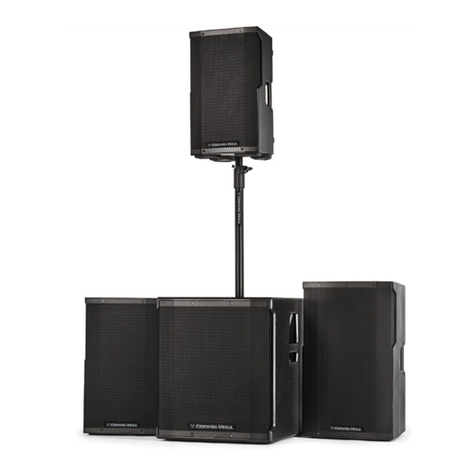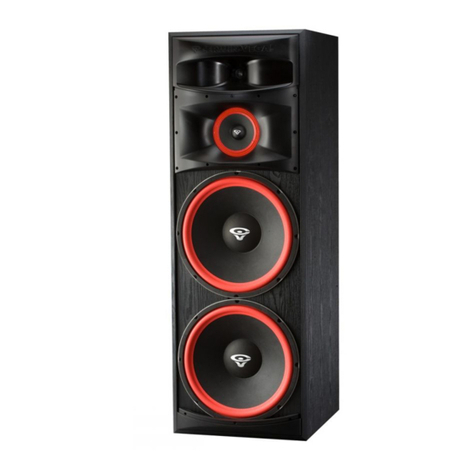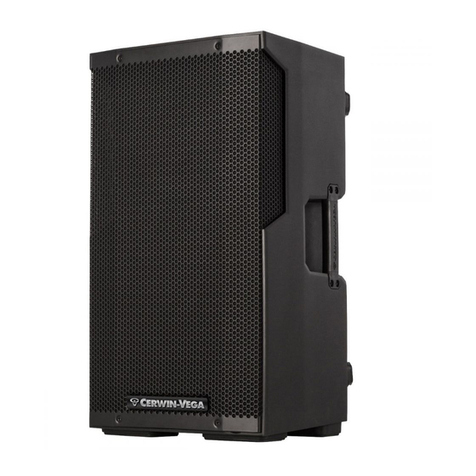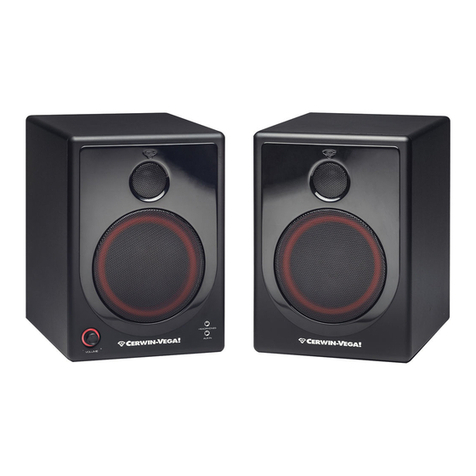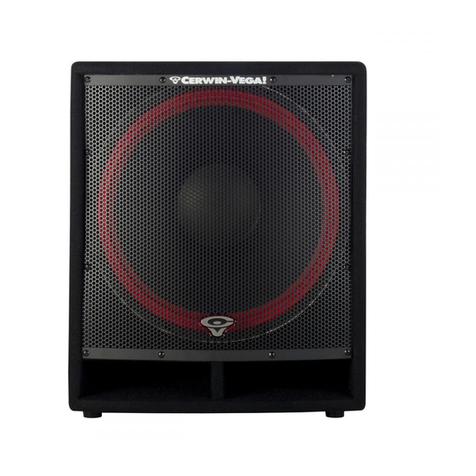
The following guide is a quick reference that will help you to easily set up your Cerwin- ega!
Active speakers. For more information, please read your product’s User Manual.
Before we describe the Cerwin-Vega! Active speakers’ main components check the following instructions:
1. Connect power and audio cables and make sure that the levels are all the way down (at zero).
2. Power on the speaker(s).
3. Verify that you have power via the Power LED.
4. Verify that you have signal. Turning the master level up slightly (we recommend not turning the level past the medium mark (12 o’clock)
until you are sure you have a clean (undistorted) signal.
C A-115, 118, & 121
Power Input and Power On / Off (Figure 1)
12
1. Power Input (w/ Fuse)
Connect here the IEC power cord. Do not use other type of power cord.
Note May be hardwired on CVA-121.
2. Power On / Off
Switches the system On and Off. Before powering On, make sure the Level is turned down and
that you have selected the correct signal type in (Mic/DI or Line).
CVA Series Subwoofer Back Panel (Figure 2)
3
45
6
7
8
910
3. Audio Input (XLR or ½”)
Balanced (Left & Right) XLR and 1/4 inch TRS connectors accept signals from balanced or
unbalanced line level or Mic level sources. Signal at In is buffered and routed to Thru.
4. Audio Thru (XLR or ½”)
This Thru signal bypasses the controls and is a buffered output of the In signal. Allows the
signal at In to be routed to a full range top speaker cabinet such as a system matched CVA-28.
Note The High Pass Thru setting affects this signa , if unsure eave in Bypass. P ease see the
description of the High Pass Contro ater in this document.
5. Link Out (XLR or ½”) (w/ Master/Slave switch) (Optional setup)
This output signal is to be used when “daisy chaining” multiple CVA subs. Set the Variable Low
Pass on the first sub and make it the Master; this setting is now passed through the Link Out to
all other subs set on Slave via the Slave input.
6. LED indicators
A. Power Indicator: Illuminates when the system is powered On, (it should remain lit).
B. Limit Indicator: Illuminates when the protection limiter is active, (this may blink
occasionally but should not remain lit).
C. Protect Indicator: Illuminates when the amp has shut down to protect itself.
Tip If this occurs, check the all connections, fuses, and make sure you have proper
amperage in the outlet.
D. Signal Indicator: An audio signal is present at the input, (normally is lit, or blinks).
7. Level
Adjusts the input signal (master volume) to the amplifier (i.e. over all loudness / volume). Make
sure this is not turned up when powering On or when switching the input (Mic/DI – Line).
8. High Pass (to Thru)
Reduces low frequencies in top speaker cabinet that can conflict with CVA sub frequencies. For
a simple yet flexible control, we have made this a four-position switch; the HPF blocks LF
signals below the indicated frequency from reaching the top cabinet (Thru).
Figure 1
Figure 2
